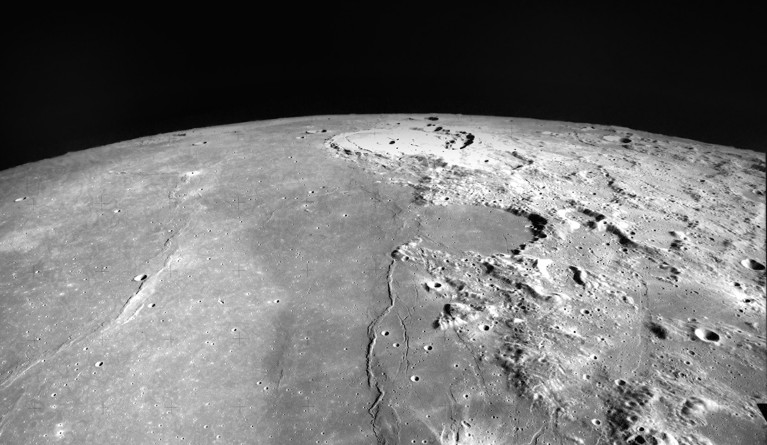Hello Nature readers, would you like to get this Briefing in your inbox free every day? Sign up here.

The Moon’s northern hemisphere, the planned touchdown site for the Beresheet lander.Credit: NASA
Private lander jumpstarts lunar space race
If all goes well, an Israeli lander scheduled to launch tomorrow will become the first privately funded craft to land on the Moon. The trip will be short and sweet — a two-day study of magnetism in rocks. But it will pioneer the type of public-private partnership that seems set to kick off a new era of lunar exploration.

CRISPR as disease hunter
Diagnostic tests based on the gene-editing tool CRISPR could someday diagnose infections faster, cheaper and more easily than can existing methods. The tests rely on CRISPR’s ability to hunt down genetic snippets from viruses that it has been programmed to find. Researchers are working on versions that target Lassa fever, dengue, Ebola and human papillomaviruses linked to certain cancers.
China sets sights on solar power in space
China wants to be the first country to launch a space-based solar power station, according to reports in Chinese state media. The long-dreamt-of power source would avoid the fluctuations caused by weather, seasons or the pesky patterns of day and night. 3D printing the station in orbit could help overcome some of the challenges of launching such an ambitious object.
Nearly half of US female scientists ditch full-time research after a child
Forty-three percent of women with full-time jobs in science leave the sector or go part time after having their first child. The equivalent number for new fathers is 23%. This compares to 16% of child-free men and 24% of child-free women who leave full time science, according to data from the US National Science Foundation that looked at a three-year period.

Source: Ref. 1
FEATURES & OPINION
“We are building the ship while we are sailing”
In 2016, epidemiologist Chikwe Ihekweazu was working in South Africa when he answered a call from an official in Nigeria, telling him that, in the morning, he would be named the first head of the Nigeria Centre for Disease Control. Ihekweazu hadn’t applied for the job, and didn’t particularly want it — but he took up the challenge and returned home. Nature explores how Ihekweazu has tackled the daunting task of fighting disease outbreaks while building a nascent agency.
How to count a zillion viruses
Earth probably harbours a million times more virus particles than there are stars in the observable Universe — but we’ve only formally described 4,958 of them. To potentially harness the power of these viruses for good, we need to work on classifying the rest, argues virologist Jens Kuhn and colleagues. They call for more funding for cataloguing efforts and more recognition for the scientists who chip in.
Enter the ScientistAtWork photo competition
Your work in the field could appear in Nature — and win you a cash prize and a year’s subscription. Nature is seeking arresting images of scientists from around the world taking part in their craft — both in and out of the lab.
